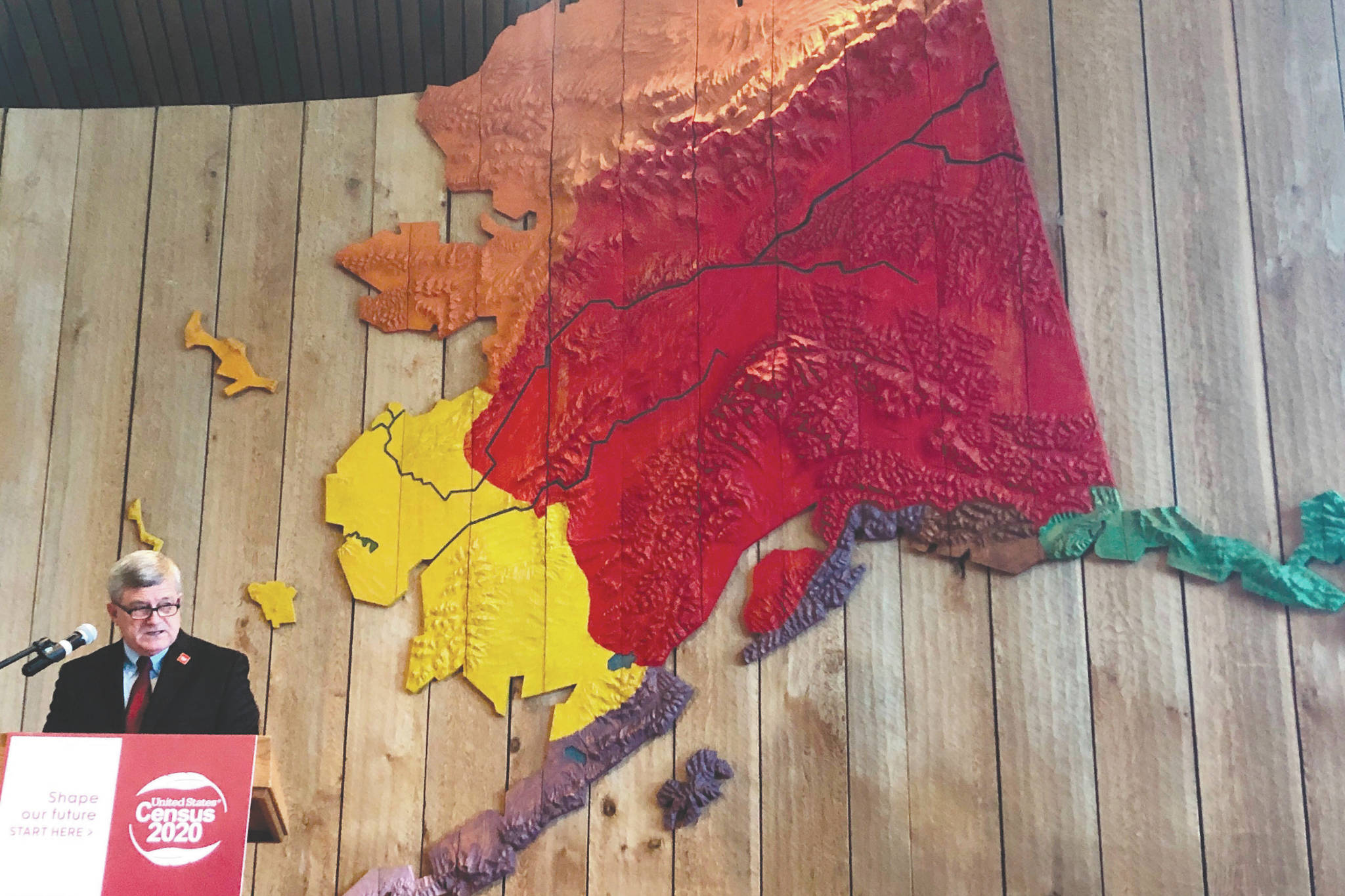Alaska’s legislative redistricting process may take longer this year than in previous years. That’s due to a lag in data reporting from the U.S. Census Bureau following the 2020 census, according to information presented by Alaska Redistricting Board Executive Director Peter Torkelson during the May 5 Kenai City Council meeting.
State legislative districts are redrawn by a board of five people following the decennial census. Two board members are appointed by the governor; one member is appointed by the Senate President; one member is appointed by the House Speaker; and one member is appointed by the Chief Justice of the Alaska Supreme Court. Board members have to be Alaska residents and cannot run for legislative office in the next election cycle. The power to draw legislative districts was previously held by the governor, however, Alaskans voted in 1998 to shift the power to a board as a way to depoliticize the process.
Current board members who participate in the redistricting process following the 2020 census, for the 2022 election cycle, include: John Binkley of Fairbanks; Melanie Bahnke of Nome; Nicole Borromeo of Anchorage; Bethany Marcum of Wasilla; and Budd Simpson of Juneau.
Torkelson said that as Alaskans move around the state, the population in each legislative district may change, giving some people more representation in the Legislature than others. The goal of redistricting, Torkelson said, is to get as close to the idea of “one person, one vote” as possible, which is required by the U.S. and Alaska Constitutions’ Equal Protection Clause.
Torkelson said that historically, in-migration to Alaska and out-migration from Alaska have canceled each other out, with the only net population gain in recent years seen in Alaska births. The distribution of new Alaskans being born is not necessarily even, however. For example, 88% of Alaskans in Bethel Census Area were actually born in Alaska as opposed to the Aleutians West Census Area, where only 17% of the population was born in Alaska.
The number of people moving to Alaska, though, has dropped off significantly in the past 10 years. Alaska’s population increased by at least 75,000 every 10 years between 1950 and 2010, but has only increased by about 15,000 since 2010. That is according to data from the Alaska Department of Labor and Workforce Development presented by Torkelson.
“In this cycle, we’re looking at almost no growth,” Torkelson said. “… This is a new experience for us. Normally we’re drawing radically different lines.”
Torkelson said that they are still not sure when the final 2020 census data will be released, but that the bureau has guaranteed that it will happen by the end of September. Regardless of when the Census Bureau releases the data, Torkelson said, the Alaska Constitution requires that one or more proposed redistricting plans be adopted within 30 days of when the data is released, with the final plan selected within 90 days. In the 60 days between when proposed plans are adopted and a final plan is chosen, the board will travel around Alaska to discuss the plans with communities.
“You should have ample opportunity to engage in that process,” Torkelson said.
When the Census Bureau releases the data will determine how long prospective political candidates will have to file for office, when legal challenges to the proposed redistricting changes can be introduced and when plans must be adopted.
What is unique about the 2020 census, Torkelson said, is that the state saw less than a single Alaska House seat’s worth of population growth. Based on Alaska’s total population of 733,391, as reported by the 2020 census, each state legislative district will have to have about 18,355 people.
More information about the redistricting process in Alaska following the 2020 census can be found at akredistrict.org.
Reach reporter Ashlyn O’Hara at ashlyn.ohara@peninsulaclarion.com.


